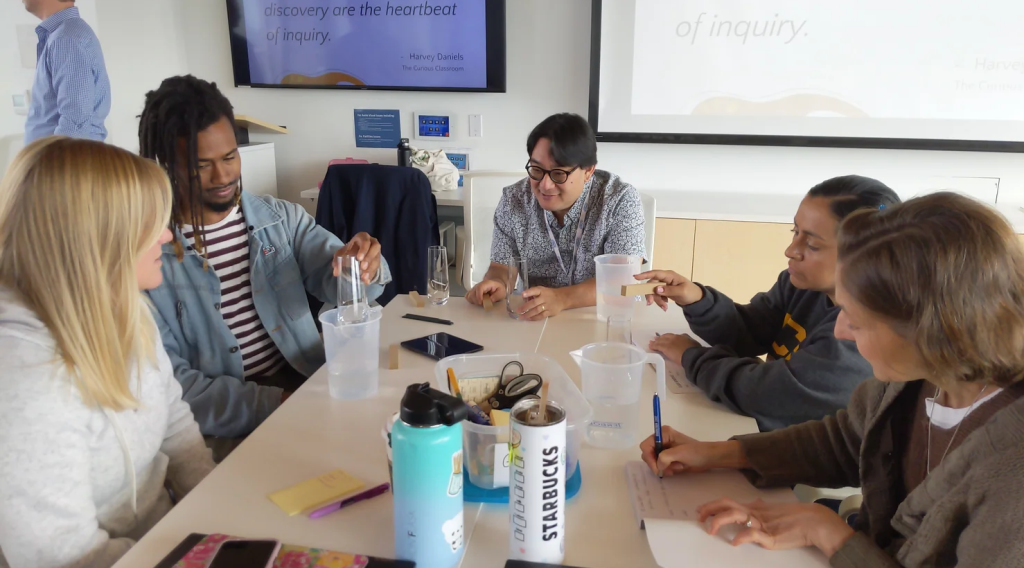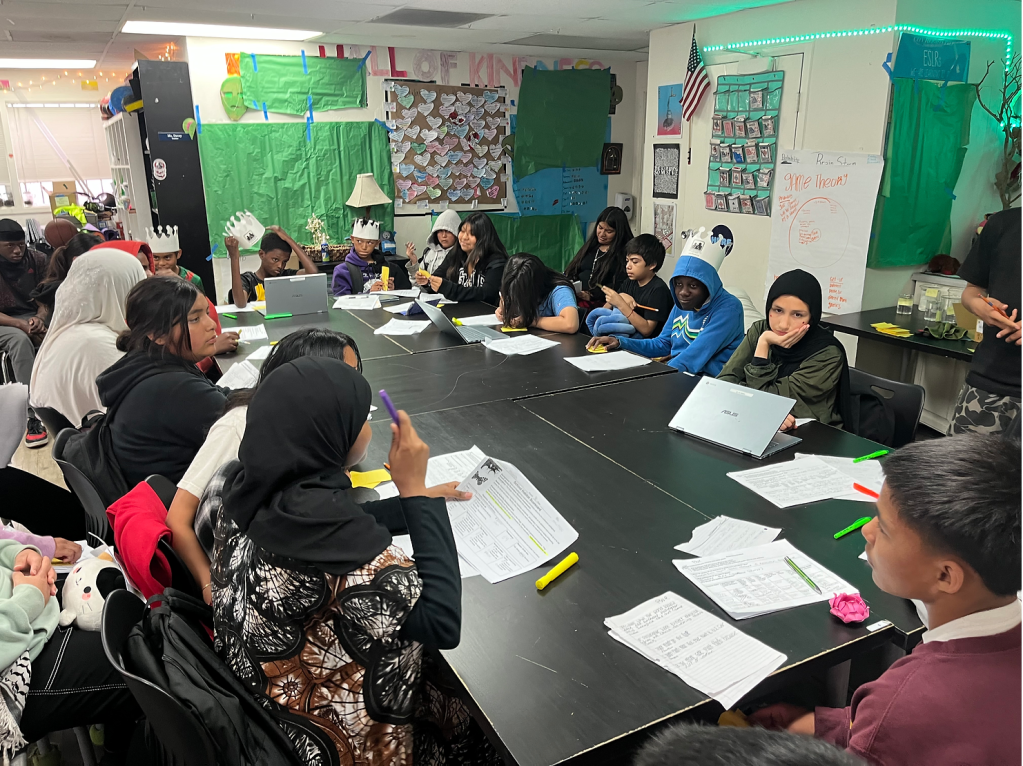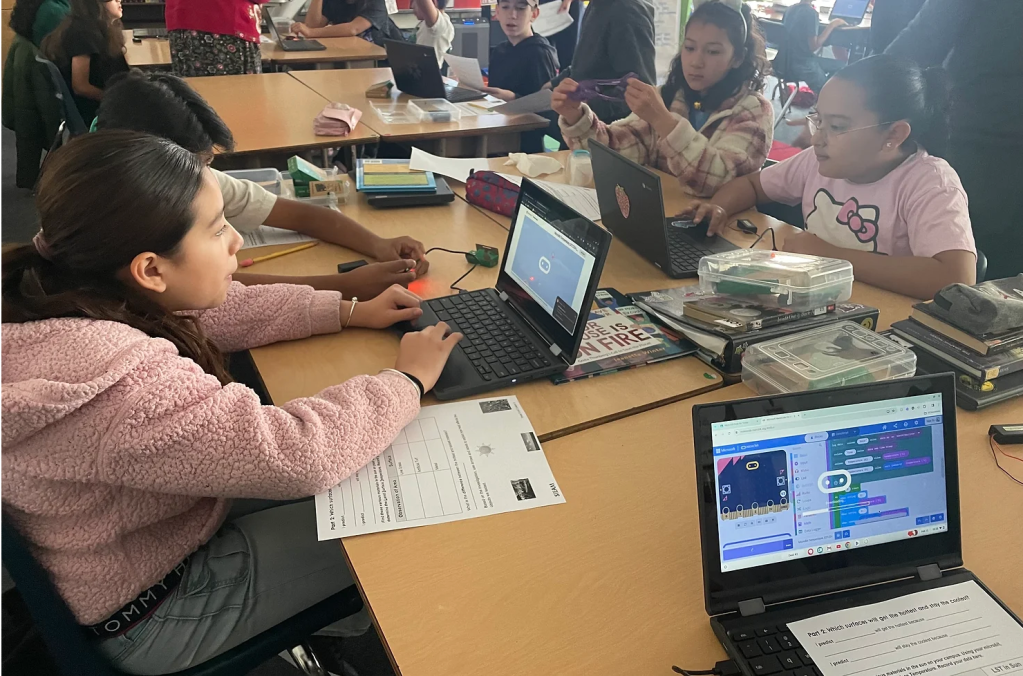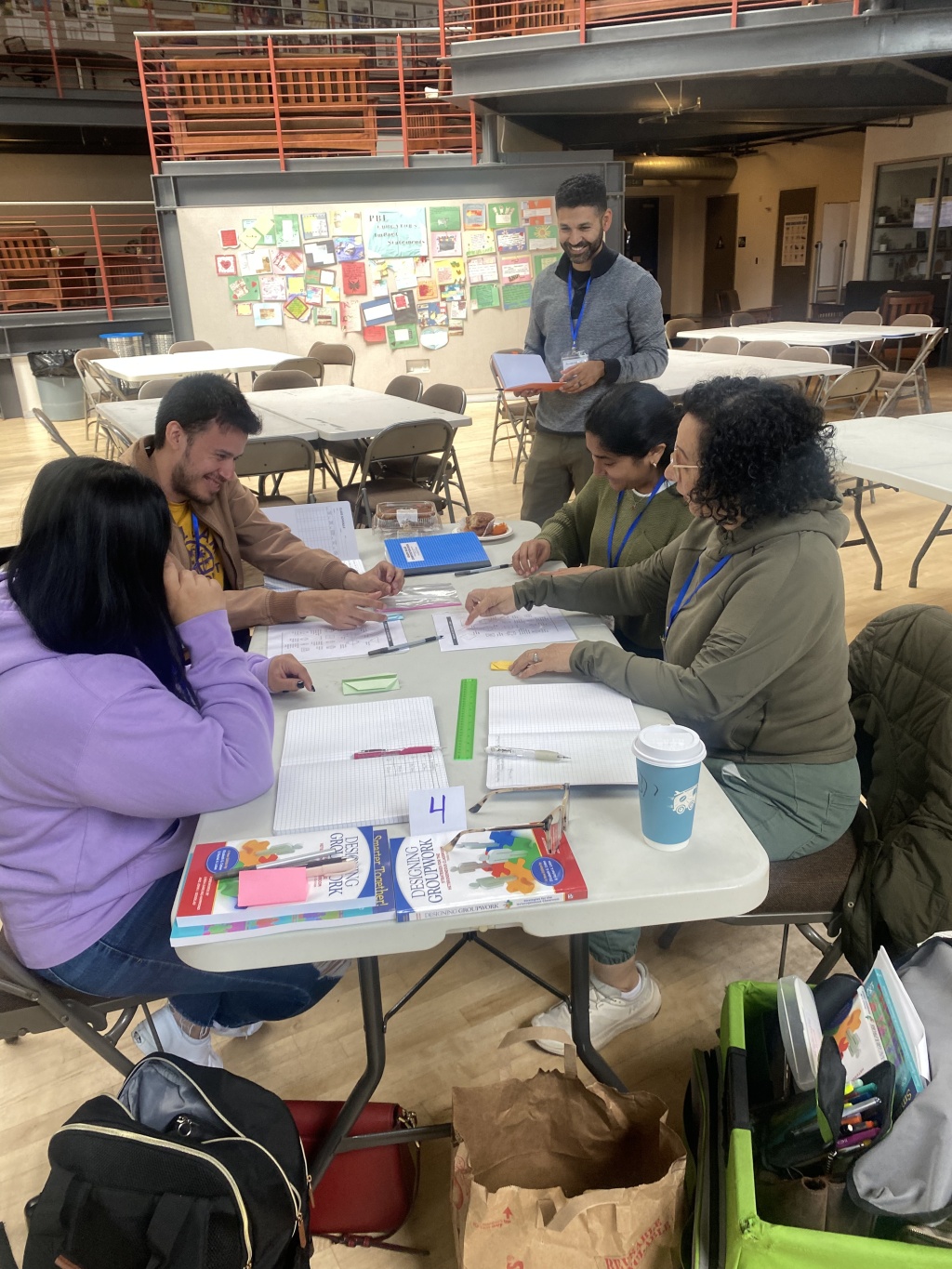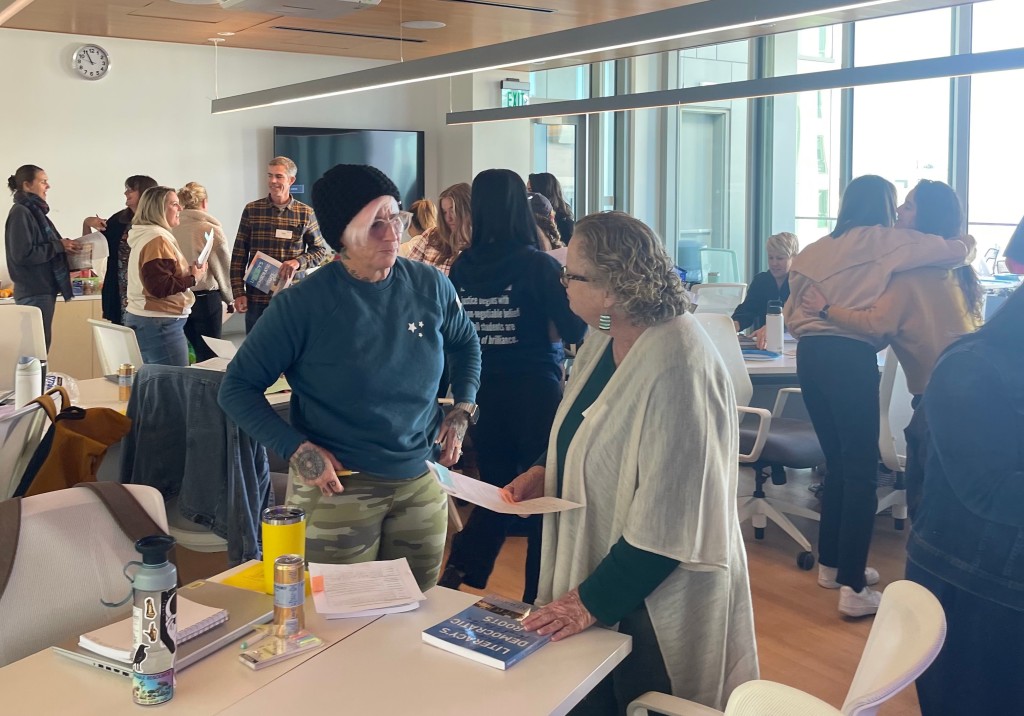
This spring’s Teaching Tolerance magazine features “Smart Tech Use for Equity,” a collaborative article by CREATE Director and UC San Diego Education Studies Professor Mica Pollock and K-12 teachers studying technology uses’ equity consequences in the classroom.
The article features first year efforts by the “Smart Tech Use for Equity” project, led by the San Diego Area Writing Project (SDAWP) and UC San Diego’s Center for Research on Educational Equity, Assessment, and Teaching Excellence (CREATE), with funding from the National Writing Project and Teaching Tolerance of the Southern Poverty Law Center.
In this teacher-led initiative, Pollock and colleagues from SDAWP, and 14 K-12 teachers from Chula Vista Elementary School District, San Diego Unified School District, South Bay Union School District and Sweetwater Union High School District, explored, tested, and documented technology’s potential and limits within an equity framework. This year, an expanded group of teachers is doing the same.
Read an excerpt from “Smart Tech Use for Equity,” Teaching Tolerance, Number 52; Spring 2016
“We’re at a juncture in education where big dollars are being spent to make sure kids have access to computers, tablets and the Internet at school. Such infrastructure opens the portal to a world of information, and new tools that support viewing, documenting and playing with information in school appear almost daily. We’re told such tools engage our students and, thus, support their learning.
But which uses of technology in schools support young people’s development better than, say, using a pencil? And which are, in fact, worse than a pencil?
As a step toward answering this question, an educator-led initiative called Smart Tech Use for Equity is engaging a diverse group of K-12 teachers who teach San Diego’s low-income students of color. The goal? Identify uses of technology in schools that promote learning, development and success for all students versus uses that don’t.
As a beginning exercise, the San Diego group reported on technology use they had seen or tried in a classroom that potentially did more harm than good. The teachers offered these examples.
- Putting kids on skill-practice games for crowd control or simply to engage kids in something.
- Using expensive Promethean boards as if they were cheap whiteboards, wasting limited district dollars.
- “Sticking all kids on an app where they are just having fun but not rigorously learning.”
- Asking students to take hours to “make fun videos” for school projects without weighing the implications for student learning.
- Replacing a hands-on lab activity with an online lab activity in science to avoid the mess and materials without evaluating the pros and cons.
- “Looking at an online textbook that is really just still a textbook—it just happens to be online.”
- Buying technology resources for everyone and running workshops on how to operate them without investigating how the technologies might be helpful.
- Keeping devices locked in computer labs or warehouses so no one steals them.
- Put simply, it was the experience of these teachers that more technology use isn’t inherently good. Closing the hardware and Internet divide is critical, but if some students get to create, think and communicate with technologies while others do more passive or low-level learning tasks, opportunity gaps persist. It was with this understanding that the group set out to ask harder questions about the pros and cons of technology use.”
Teachers tested uses of technologies to support student voice and explanation in science, help students debate literature, and enable deeper “math talk.”
In response to the article, Katrine Czajkowski, a program manager supporting beginning teachers for the Sweetwater Union High School District, wrote, “Working with Mica Pollock and other colleagues, the teachers from our district developed a framework for studying how integration of technology within instruction and assessment promotes equity in the classroom. This encouraging and instructive text illustrates the many benefits of our ongoing partnerships with post secondary institutions and researchers. What an honor to work alongside such powerful advocates for student voice!”
To learn more about the Smart Tech Use for Equity project, attend the Smart Tech Use for Equity learning session at UC San Diego’s “Teaching for Impact: Innovative Practices for Today’s Standards” conference on April 30, 2016, hosted by UC San Diego’s CREATE and the Department of Education Studies. Contact CREATE for registration information.

